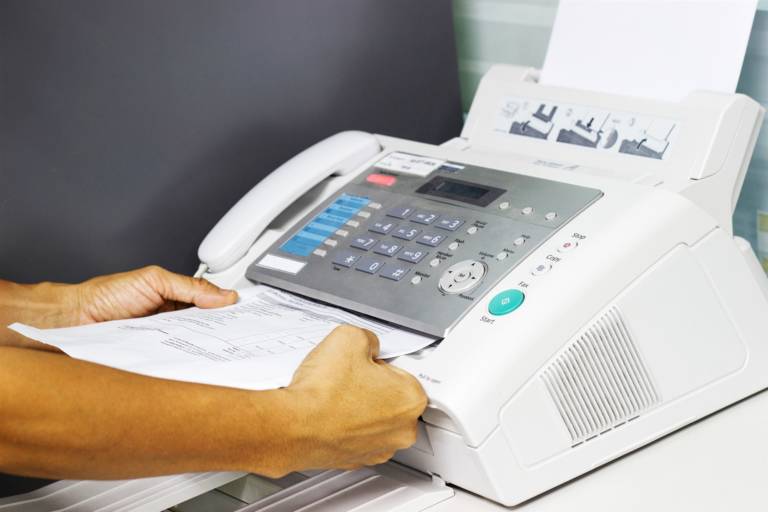The fax reborn: How COVID-19 gave new life to an unlikely technology

With stay at home orders and the sudden need to securely share sensitive documents from employee’s homes, there has been a significant demand for a surprising technology: the digital fax. Despite industry-wide efforts to digitally transform, the physical fax is still a very common and necessary piece of technology for many organizations.
In fact, 89 percent of small to medium-sized businesses still use faxes in one form or the other, and faxing still dominates communication in several fields. For example, faxing accounts for 79 percent of all communication in the medical industry. These same organizations have been scrambling to support the abrupt shift to remote work and have had numerous roadblocks in the process.
The Challenge for IT Teams
Information Technology teams have been presented with several challenges to support staff in working from home, including purchasing laptops, providing phone and internet services, and establishing secure VPN connections. One of the most challenging dynamics of remote work has been figuring out a way for remote teams to send and receive critical fax documents that pre-COVID were transmitted as hard copy documents on fax devices at the office.
To compound the issue, industries most impacted are often responsible for handling sensitive customer information. In the medical industry for example, much data is governed by the HIPPA Privacy Rule and most of these fax documents include personal health information (PHI) and personal identifiable information (PII). Due to federal regulations, this type of information must be secure with a complete audit trail of all inbound and outbound faxes to meet security and privacy regulations.
Because of this, there has been an urgent need to replace the outdated infrastructure of physical fax machines, and quickly replace it with a secure, encrypted digital faxing infrastructure. Organizations involved in healthcare, public sector and banking/finance have struggled the most in keeping up with the abrupt communication changes that came about from COVID-19. Below are some examples of industry-specific challenges as a result of work-from home orders:
Healthcare’s costly response delays
HIPPA is a necessary precaution to protect patient privacy but is often associated with costly fines when violated. In fact, a first-time violation costs an organization a minimum of $50,000. One of the biggest factors involved with HIPPA protocol when it comes to faxing to the correct address. With most industries still using manual address input, the margin for human error unspeakable. For example, if a fax containing PHI is sent from a healthcare establishment and is intended for an insurance establishment, the sender is responsible for the HIPPA fine if accidentally sent to the wrong address. Not only does this create patient privacy concerns, it also creates very costly repercussions.
HIPPA isn’t the only concern when it comes to missed faxes. One hospital customer reported up to 15,000 missed fax transmissions per week, resulting in approximately $200,000 per week in lost insurance reimbursements, because staffers working from home could not retrieve them from the fax machines at the office in time. Insurance companies will often issue a claim denial if the establishment does respond within 24 to 48 hours. As you can imagine, this has forced the healthcare industry to have to quickly and aggressively shift towards more secure communications options to avoid these steep fines.
The Public Sector’s struggle to manage the unemployment influx
The unemployment rate in the United States reached an all-time high of 14.70 percent in April of 2020 as a result of the COVID-19 impact. Not only that, the federal government promised an extra $600 a week for every coinciding unemployment claim. This combination has created in influx of applications, and the need for local and state-level unemployment offices to share sensitive documents safely and securely with the US Department of Labor in Washington D.C. in order to release funds to the individuals impacted.
Unfortunately, the local and state-level unemployment offices were just one of the many government entities that were thrust into a new way of work with stay-at-home orders. This combination has created a massive backlog of unemployment payments at a time when US citizens need it most. In California alone, "during March and April combined, the state’s Employment Development Department received 4.01 million initial claims for unemployment benefits from California workers, according to statistics compiled by the U.S. Labor Department’s Employment & Training Administration. Yet over the same two months, which roughly cover the start of business shutdowns ordered by state and local government officials, the EDD made its first unemployment payments to 2.26 million California workers. That means 1.75 million jobless California workers who filed claims during those two months were still waiting for first-time payments as of the end of April."
There was and still is a glaring need for these state-level offices to pivot their current strategies and optimize for a new way of work to meet the needs of US citizens.
The finance industry’s response to mortgage loans and refinance applications
The previously mentioned influx of unemployment and the need for many to decrease monthly expenses has created a larger interest in homeowners looking to refinance their homes and lower existing interest rates. In the beginning of March, the Mortgage Bankers Association reported that the Refinance Index increased to the highest level since April 2009. This increase in refinance applications was met with the same application bottleneck as other industries.
With finance and banking employees shifting to remote work, customers could no longer share sensitive documents and applications via fax. The issue is further compounded by the lack of available customer support agents to assist in any questions and troubleshooting. A once viable option for financial sustainability during a time of uncertainty became inaccessible to those in need, and financial institutions needed to quickly respond in order to not only meet demand, but retain the loyal customer base they worked so hard to build. Because of this, many financial institutions have looked to encrypted digital fax solutions that allow for the same, if not more, agility in meeting those customer demands. This ensures business can go on as usual, and customers are able to maintain a sense of well-being during a time of extreme adversity.
While it isn’t reasonable to expect a 100% work from home workforce for all industries for an extended period of time, the pandemic has expedited many industries’ efforts to digitally transform and has opened up the doors for the possibilities of the “future of work.” With some companies like Facebook and Google putting "work from home forever" policies in place, we can expect to see a significantly larger remote workforce and coinciding technology that is able to empower remote teams with the tools they need to be successful.
 Brett Resh is the Director of Streem Sales for Cleo, an ecosystem integration software provider.
Brett Resh is the Director of Streem Sales for Cleo, an ecosystem integration software provider.